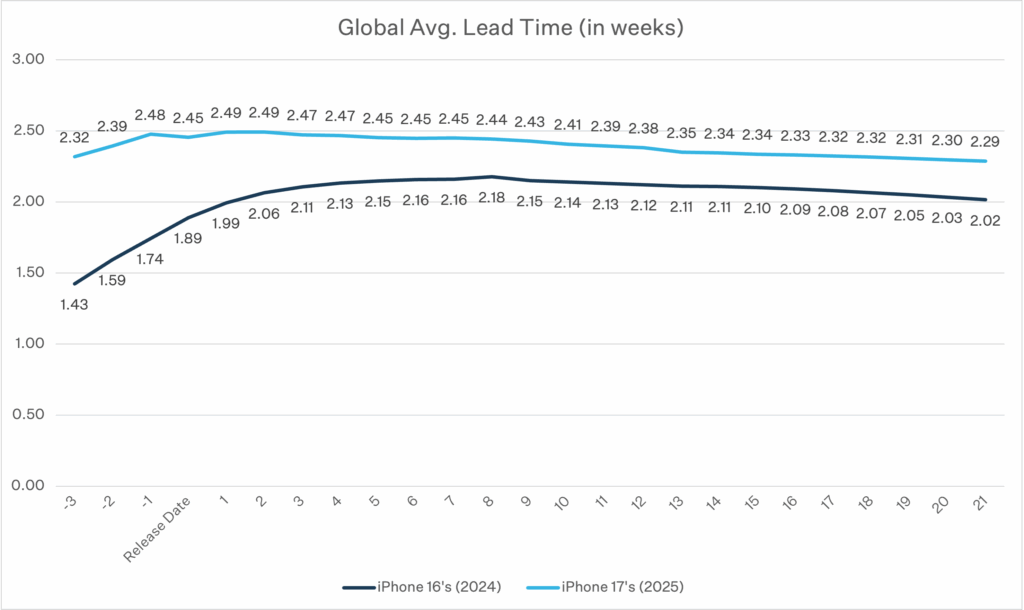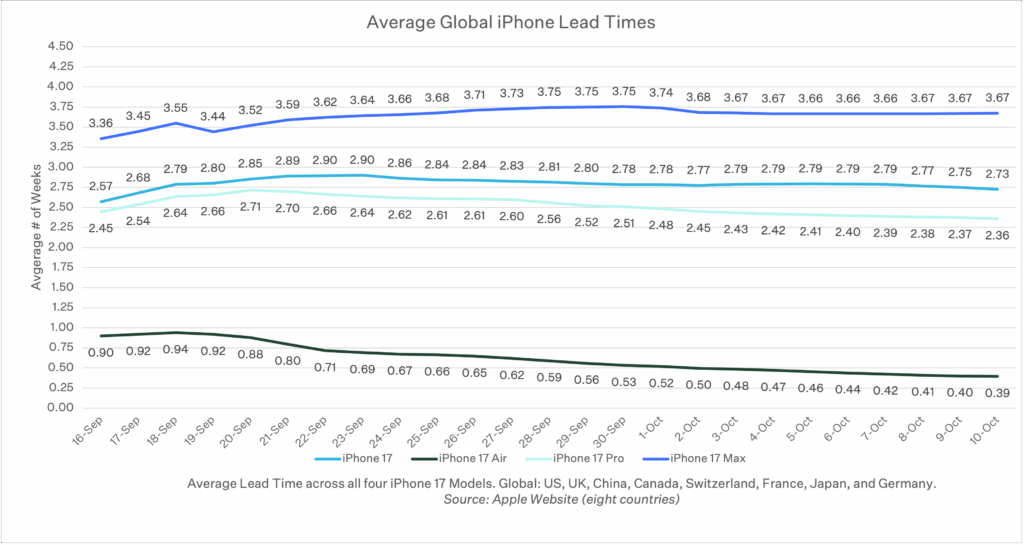Lead Times
There’s a debate about the value of tracking lead times. After all, we don’t know how much supply there is, which makes it difficult to translate lead times into a measure of demand. That said, my observation over the past decade is that longer waits typically line up with stronger cycles.
The global snapshot compares favorably with last year. Three weeks after the release date, iPhone 17 lead times globally (eight countries) were 2.29 weeks, compared to iPhone 16 at 2.02 weeks, accounting for a 13% gap. That’s the same 13% gap we observed two weeks ago (2.45 weeks, compared to iPhone 16 at 2.16 weeks). The bottom line is that three weeks in, lead times this year are about 13% longer than last year.

One dynamic that continues to stand out in the country-level readings is that most countries were at around two weeks, while China was just under four weeks. I don’t have a good explanation for the gap, especially since most of the phones are assembled in China.


Where are lead times going from here? There will be some noise in the numbers if reports are accurate that Apple has asked suppliers to boost production of the entry level iPhone 17 by about 30–40%. If base-model output increases as reported, aggregate availability will improve and lead times should come down in the weeks ahead.
